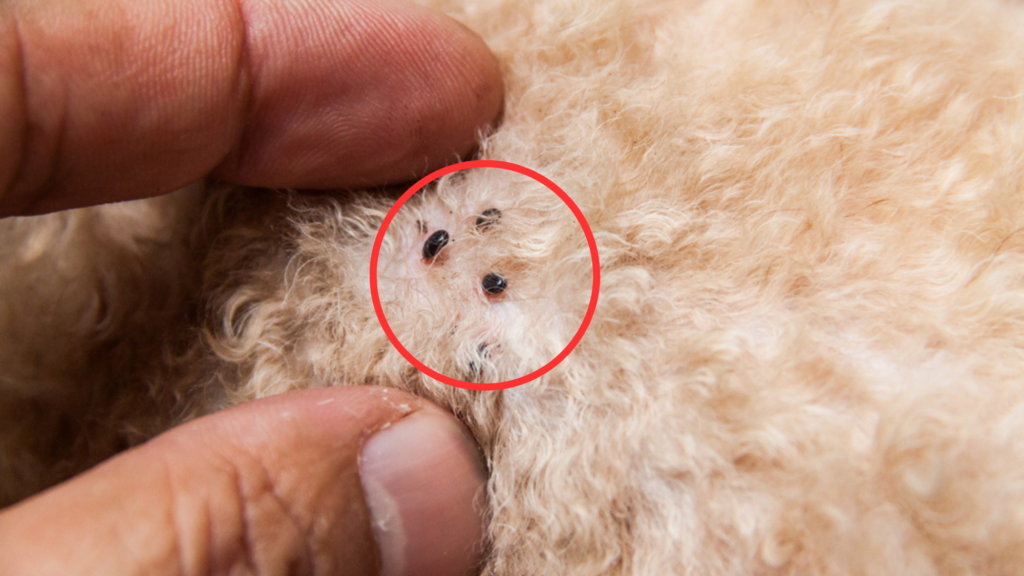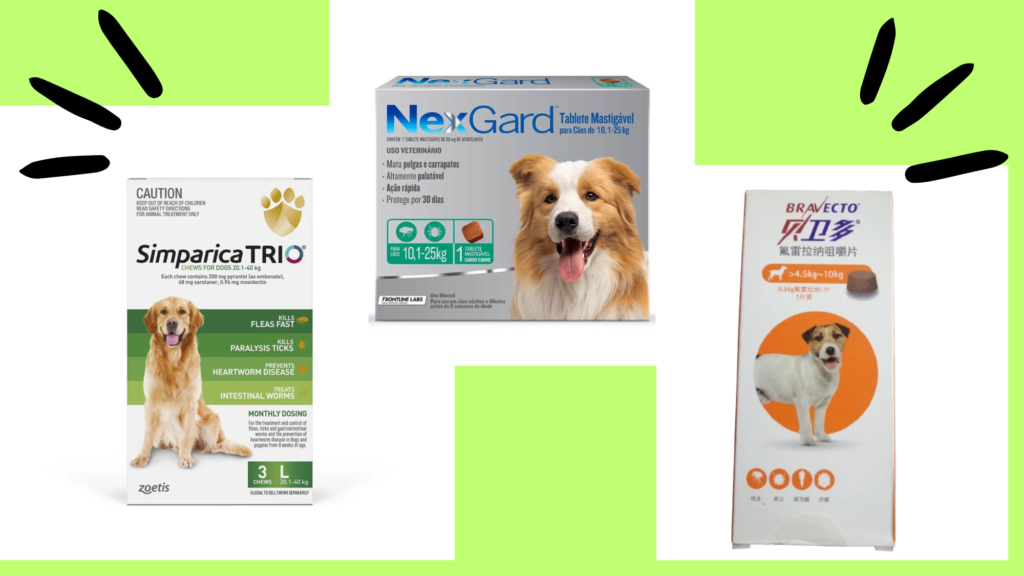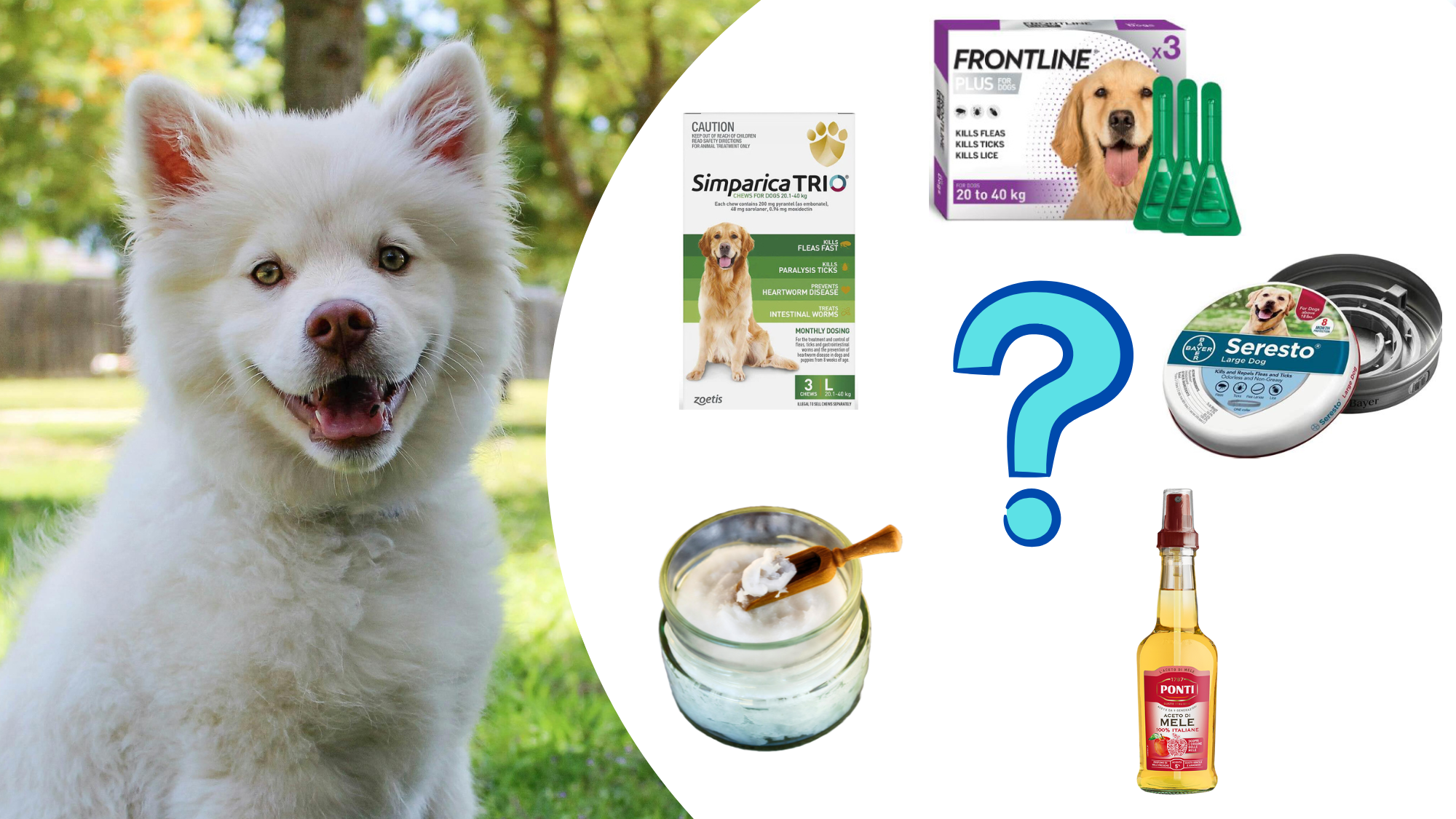| Summary: The safest flea and tick medicines for dogs include Simparica Trio, an effective oral preventative, Frontline Plus, a trusted topical treatment, and the Seresto Collar, which offers long-lasting protection. For a natural approach, coconut oil, apple cider vinegar spray, and diatomaceous earth provide chemical-free alternatives, ensuring your dog stays protected year-round. |
Fleas and ticks are more than just annoying parasites; they can pose serious health risks to your dog. Fleas can cause skin irritation, allergies, and anemia, while ticks can transmit dangerous diseases like Lyme disease and Rocky Mountain spotted fever. This is why choosing an effective and safe flea and tick medicine is essential for protecting your furry companion. So, what is the safest flea and tick medicine for dogs?
However, with so many options available—ranging from topical treatments, oral medications, collars, and natural remedies—it can be difficult to determine which is the safest. Some products contain harsh chemicals that may cause side effects, while others might not be effective enough. This guide will help you understand different flea and tick treatments, their safety profiles, and which options are best suited for your dog. To find the perfect fit, learn more about ensuring your dog’s comfort and safety by reading What collar size is best for a Bichon?.
Blog Highlights
ToggleQuick Fix
If you’re unsure about the best option for your pet, this quick fix will guide you in choosing what is the safest flea and tick medicine for dogs, ensuring effective protection and peace of mind.
Why Flea and Tick Prevention Is Important
Flea and tick prevention is essential for your dog’s health. Knowing what is the safest flea and tick medicine for dogs helps keep your pet protected from harmful parasites and diseases.
1. Fleas Can Lead to Serious Health Issues
Fleas are tiny, fast-moving pests that survive by feeding on your dog’s blood. While they may seem like a minor nuisance, they can cause significant problems, especially for puppies or dogs with allergies. A severe flea infestation can lead to anemia, which can be life-threatening in small or weak dogs.
Additionally, fleas can transmit tapeworms and cause Flea Allergy Dermatitis (FAD), an allergic reaction that results in intense itching, hair loss, and skin infections. These issues can make your dog extremely uncomfortable and require veterinary intervention.

2. Ticks Carry Dangerous Diseases
Ticks are even more concerning because they can transmit deadly diseases. Some of the most common tick-borne illnesses in dogs include:
- Lyme disease – Causes fever, joint pain, and lethargy.
- Rocky Mountain spotted fever – Leads to fever, swelling, and neurological problems.
- Ehrlichiosis and anaplasmosis – Affect blood cells and the immune system, potentially leading to severe health complications.
These diseases can be difficult and expensive to treat, making prevention the best approach. By using a safe flea and tick medicine, you can protect your dog from these harmful parasites before they become a problem. The recommended size collar for an English Cocker Spaniel usually ranges from 12 to 18 inches, providing a snug and comfortable fit for your dog.
What to Consider When Choosing a Safe Flea and Tick Medicine
When selecting a product, it’s important to know what is the safest flea and tick medicine for dogs to ensure your pet’s health and protection from harmful parasites.
1. Safety for Your Dog’s Age and Size

Not all flea and tick medicines are safe for every dog. Some products contain ingredients that may be too strong for puppies, senior dogs, or small breeds. Others may not be effective for large or giant breeds.
- Puppies under 8 weeks old should not be given most flea and tick medications, as their bodies are still developing.
- Senior dogs or dogs with health conditions may be more sensitive to certain chemicals.
- Dogs with a history of seizures should avoid medications containing isoxazolines (found in Bravecto, NexGard, Simparica, and Credelio), as they may increase the risk of seizures.

Always check the product label and consult your veterinarian before using any flea and tick medicine.
2. Effectiveness Against Both Fleas and Ticks
Some products only target fleas, while others work on both fleas and ticks. For the best protection, choose a treatment that kills and repels both pests. Certain medications also help control flea eggs and larvae, preventing reinfestation.
If you live in an area with a high tick population, such as wooded or grassy regions, a tick-specific treatment is a must. Not all flea treatments work on ticks, so read the label carefully before making a decision.
3. Potential Side Effects
Some flea and tick medications come with side effects. While most dogs tolerate them well, some may experience:
- Vomiting or diarrhea
- Skin irritation or hair loss (for topical treatments)
- Lethargy or decreased appetite
- Seizures (rare but possible with certain oral medications like isoxazolines)
If your dog has a history of medication sensitivities, a natural flea and tick prevention method or a milder treatment may be a safer option.
4. Ease of Use
Different flea and tick treatments have different application methods. Some are easier to administer than others:
- Oral tablets – Given as a chewable treat, easy for dogs who like food-based medications.
- Topical treatments – Applied to the skin, effective but may leave a greasy residue.
- Collars – Provide long-term protection but may not be suitable for every dog.
- Sprays and shampoos – Useful for immediate relief but need frequent application.
Choosing the right type depends on your dog’s lifestyle and your personal preference. The ideal size collar for English Springer Spaniel typically ranges from 14 to 20 inches, depending on the dog’s age and neck size, ensuring a comfortable and secure fit.
What is the Safest Flea and Tick Medicine for Dogs
1. Oral Flea and Tick Medications
Oral flea and tick preventatives come in chewable tablet form and typically last for one to three months. These treatments work by entering your dog’s bloodstream and killing parasites when they bite.
Best Safe Oral Medications:
- Simparica Trio – Protects against fleas, ticks, heartworms, and intestinal parasites.
- NexGard – Kills fleas and ticks within hours, but should be avoided in dogs prone to seizures.
- Bravecto – Lasts for 12 weeks, reducing the need for monthly dosing.

Pros:
✔ Convenient, no mess
✔ Long-lasting protection
✔ Highly effective
Cons:
✖ May cause digestive upset in some dogs
✖ Not ideal for dogs with seizure disorders
2. Topical Flea and Tick Treatments
Topical flea and tick treatments are liquid medications applied directly to the dog’s skin, usually between the shoulder blades. They kill fleas and ticks on contact and may also help repel mosquitoes.
Best Safe Topical Treatments:
- Frontline Plus – Contains fipronil and (S)-methoprene, safe for most dogs.
- Advantix II – Kills fleas, ticks, and mosquitoes but should not be used on cats.
- Revolution – Also protects against heartworms, making it a multi-purpose solution.
Pros:
✔ Works without requiring the parasite to bite
✔ Provides waterproof protection (after 24-48 hours)
✔ Easy to apply
Cons:
✖ Can leave a greasy residue
✖ Some dogs experience skin irritation
3. Flea and Tick Collars
Flea collars offer long-term protection and work by releasing small amounts of active ingredients over time. Some collars kill fleas and ticks, while others only repel them.
Best Safe Flea Collars:
- Seresto Collar – Provides 8 months of protection against fleas and ticks.
- Scalibor Protector Band – Effective against ticks, sandflies, and mosquitoes.
Pros:
✔ Long-lasting protection
✔ No monthly applications required
✔ Water-resistant
Cons:
✖ Some dogs may have skin reactions
✖ Not all collars are equally effective
4. Natural Flea and Tick Prevention
If you prefer a chemical-free approach, natural flea and tick remedies can provide an extra layer of protection.
Safe Natural Alternatives:
- Apple Cider Vinegar Spray – Can repel fleas and ticks when diluted with water.
- Coconut Oil – Contains lauric acid, which repels fleas naturally.
- Diatomaceous Earth – A fine powder that dehydrates and kills fleas on contact.
- Essential Oils (Lavender, Cedarwood, Lemongrass) – Must be diluted properly before applying to dogs.

Pros:
✔ No harsh chemicals
✔ Safe for dogs with sensitivities
✔ Can be used alongside other treatments
Cons:
✖ Less effective than medicated options
✖ Requires frequent reapplication
How to Safely Apply Flea and Tick Medication to Your Dog
1. Preparing for Application
Before applying any flea and tick medication, it’s important to read the instructions carefully. Each product has specific dosage guidelines based on your dog’s weight, age, and health condition. Using the wrong dosage can lead to ineffective treatment or potential side effects.
If you’re using topical treatments, ensure your dog’s skin is clean and dry. Do not bathe your dog 24-48 hours before or after application, as water can reduce the effectiveness of the medication. For oral medications, ensure your dog eats before taking the pill to minimize stomach irritation. Some dogs may resist chewable tablets, so wrapping them in peanut butter or a treat can help with administration.
2. Applying Different Types of Flea and Tick Treatments
- Topical Treatments: Part your dog’s fur and apply the liquid directly onto the skin, typically at the base of the neck or along the spine. Avoid touching the treated area until it dries completely to prevent transferring the medication to yourself.
- Oral Medications: Give your dog the chewable tablet as a treat or mix it with food. Watch to ensure they swallow it completely.
- Flea Collars: Adjust the collar so that it fits snugly but comfortably. Ensure two fingers can fit between the collar and your dog’s neck. Trim any excess length to prevent chewing.
- Natural Remedies: If using essential oils or apple cider vinegar spray, always dilute them properly before application. Test a small amount first to check for any allergic reactions.
3. Monitoring for Side Effects
After application, observe your dog for any signs of an adverse reaction, such as vomiting, lethargy, skin redness, or excessive scratching. If symptoms persist, consult your veterinarian immediately. Consistently applying flea and tick medication as directed will keep your dog protected and healthy year-round.
Final Verdict: Which Flea and Tick Medicine Is Safest for Your Dog?
The safest flea and tick medicine depends on your dog’s age, health status, and lifestyle. For most dogs, Simparica Trio or Frontline Plus are excellent choices due to their safety and effectiveness. However, if your dog has a history of seizures, a natural alternative or a topical treatment may be a better fit. Hope so, now you know, what is the safest flea and tick medicine for dogs.
Before choosing a flea and tick prevention method, consult your veterinarian to ensure the product is suitable for your pet. Keeping your dog protected year-round will help them stay happy, healthy, and parasite-free! Find out Which style of dog collar is best for hounds? to ensure comfort and safety for your furry friend.





